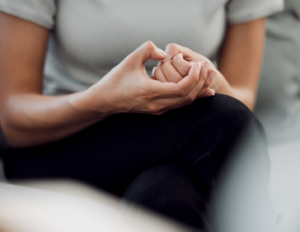Blog







Anxiety and specifically anxiety disorders involve a strong fear response based on certain triggers. Often the nature of the triggers and the associated symptoms, distinguish the type of anxiety experienced. For example, for specific phobias, like spider phobias, seeing a spider (trigger) can result in increased physiological anxiety and functional difficulties, such as avoidance of outdoor spaces or significant distress by frequently fearing one will see a spider (associated symptoms). Here is a chart below that gives examples of the various triggers and associated features for different types of anxiety:
| Anxiety | Triggers | Associated Symptoms/Functional Issues |
| social anxiety | Fear of negative judgment/criticism | Blushing, sweating (physical symptoms), negative self-thoughts, avoidance of strangers |
| OCD |
Thoughts/images (obsessions)
|
Taking longer to complete tasks/being late, concentration difficulties |
| trauma anxiety | Fear of harm/danger to self/others | Avoidance of public situations, relationship issues |
| panic | Physical symptoms | Isolating, avoidance of going out, avoidance of exercise, crowds |
| phobia | Animals, insects or specific situations (e.g., flying, needles) | Increased thoughts/distress, avoidance of trigger(s) |
In the treatment of anxiety, exposure therapy is a highly effective and evidence-based approach and helpful across different forms of anxiety. By leveraging exposure therapy techniques for anxiety, individuals can confront their fears in a controlled environment, fostering the development of healthy coping strategies for anxiety.

The roots of exposure therapy come from behavioural psychology from the mid 20th century, specifically:
* Classical conditioning from Ivan Pavlov and his work with salivating dogs
* Systematic desensitization from John Wolpe, in which he introduced imaginal and situational/in vivo exposure as specific ways to improve anxiety
Exposure therapy involves the introduction of fear-based stimuli in step-wise or graduated fashion to increase one’s “habituation” or decrease one’s anxiety and avoidance tendencies through repeated and frequent exposure in a controlled manner. Exposure therapy typically starts with less distressing triggers or triggers which provoke a moderate level of anxiety, and increase in difficulty as the client gains confidence and “habituates” to the triggers. Benefits of exposure therapy for anxiety can include helping an individual enhance their self-efficacy, which can help them feel more confident and capable of confronting challenges overall.

The approach to exposure therapy has five phases:
1) Assessment: Understanding the precise nature of the patient’s anxiety, triggers, associated symptoms and impacts on functioning. This phase is essential as it can help construct a “road map” or treatment plan for interventions to address the exact type of anxiety experienced by the patient, while taking into account how the anxiety manifest for them and how it impacts their life.
2) Psychoeducation: This phase involves highlighting important aspects of the patient’s experience of anxiety, so they can not only understand their symptoms in a cohesive model but also make sense of how exposure therapy will help them. Part of this phase also identifies specific aspects of therapeutic exposure, that sets the stage for the patient becoming more independent in managing their anxiety over time. In the psychoeducation phase, therapist may assign anxiety records or tracking to help the patient become more aware of specific elements of their anxiety (e.g., thoughts, feelings, sensations and behaviours) and catalogue their triggers, which can be valuable in the subsequent phases.
3) Exposure Planning: Thorough using a “fear hierarchy” under the therapist’s guidance, the patient is able to separate one’s triggers or challenging situations under different levels of anxiety. By doing this, the patient applies their knowledge from the psychoeducation phase and essentially creates a road map for what their exposures will look like over the course of therapy.
4) Completing Exposures: Patients are guided by their therapist in how to complete exposures, usually with completing initial exposures in the presence of the therapist, so that the therapist is able to observe and refine the patient’s approach to exposure. This ensures the exposures are being done in a beneficial way. Patients may complete a combination of imaginal, situational/in vivo and/or interoceptive (internal sensations) exposures as part of their exposure phase. Safe gradual exposure therapy methods ensure that the process does not overwhelm the patient.
5) Repeated Exposures and Practice: The patient works towards a regular practice of exposure and gains confidence in directing their own exposures over time. They are attuned to being aware of “safety behaviours” or subtle avoidance reactions that may interfere with therapeutic progress. As the patient progresses in therapy, they approach functionally meaningful goals, such as doing activities of enjoyment they previously avoided or improving aspects of their school, work or relationship functioning that were previously impaired by their anxiety.

The theories, particularly in behavioural and cognitive psychology, that underpin exposure therapy identify four specific ways that exposure therapy can result in benefits for people with anxiety:
* Habituation: Decreased levels of anxiety with repeated exposure to an anxiety trigger.
* Emotional processing: Developing new and non-threatening associations with the trigger (e.g., Even though I didn’t initially like crowds, I realized there are aspects of going to the mall I like)
* Self-Efficacy: Increasing confidence in one’s ability to coping with challenging situations.
* Extinction: Learning that feared outcomes do not occur and reduction of anxiety as a result.
These mechanisms can be attended to in therapy to help solidify and further accelerate the patient’s gains in coping with their anxiety. By also incorporating a person’s personal experiences with exposure therapy into the sessions, therapists can help patients relate to real-life success stories and tailor the therapy to fit the individual. Indeed, anxiety exposure therapy benefits are numerous and can result in a profound improvement in one’s day-to-day life.

To give a specific example of how exposure can be used, we can look at the approach of gradual exposure therapy for social anxiety. Exposures can help individuals to face social situations incrementally, thus reducing the physiological anxiety and functional difficulties they previously encountered. During the exposure planning phase of therapy, gradual exposure therapy steps are outlined, laying the foundation for therapeutic benefit.
Exposure therapy for OCD involves introducing a patient to the thoughts or images that may act as triggers, encouraging them to develop new ways of processing these obsessions that minimize rituals and repetitive behaviors.
For people with specific fears, like a spider phobia, example of gradual exposure therapy might involve starting with just talking about spiders, then looking at pictures, before eventually moving on to being in the same room with a spider. This gradual exposure therapy to fears approach helps break the strong fear response commonly seen in anxiety disorders.
The addition of cognitive behavioral therapy with exposure therapy can facilitate cognitive restructuring in gradual exposure therapy, where patients are taught to challenge and modify negative thoughts associated with their anxiety triggers.
Furthermore, exposure therapy for panic attacks may involve interoceptive exposure, given that internal sensations may trigger anxiety or panic attacks. As one becomes accustomed to their triggers through repeated exposures, the intense sensations typically associated with anxiety, like sweating or rapid heartbeat, can begin to subside. This is an example of habituation, which suggests that through effective anxiety management techniques, including anxiety exposure therapy techniques, one can gradually reduce their fear response. Later in therapy for panic disorder, situational exposure for panic attacks can be used when the patient gains confidence in their ability to cope with their anxiety and experience decreased anxiety with internal sensations.
Lastly, it is important to note that exposure therapy for managing anxiety can be part of a broader array of stress and anxiety management techniques, where the goal is to equip individuals with the best anxiety management strategies for improving their quality of life. As noted above, approaches can be tailored to an individual experience and context to ensure relevant aspect of their anxiety and difficulties are being addressed in therapy.
———————————————————————————-
We hope this article helped you learn more about how exposure therapy is used to treat different types of anxiety. Are there other things you want to know about anxiety or anxiety treatment? Let us know in the comments and we’d be happy to answer these questions in a future article.
At The Momenta Clinic for Psychological Wellness, we understand the complexities of navigating anxiety and the courage it takes to confront it head-on. Our dedicated team, drawn from diverse backgrounds, holds a deep respect for the various paths that have led you to us, each therapist bringing their own ingenuity and compassionate insight. Our approach to anxiety, including the nuanced application of exposure therapy techniques, is grounded in a solid base of research and tailored to address your unique experiences and needs. Our therapists and psychologists in Toronto, Brampton and online are ready to help! We can see you at our Toronto psychology clinic, our Brampton therapy clinic or in our virtual therapy online in Ontario.
Whether it’s through gradual exposure therapy steps designed to manage social anxiety, or employing exposure therapy techniques for anxiety that target specific phobias, panic attacks or OCD, our approach is rooted in partnership. We pride ourselves on creating a safe space for you to explore and understand your anxiety triggers, guiding you with care through each phase of exposure therapy—from the initial assessment to the detailed planning of your exposure hierarchy and the thoughtful execution of exposures, both imaginal and in vivo.
Through this collaborative journey, we aim to empower you with effective anxiety management techniques and healthy coping strategies for anxiety, all within a framework of cognitive-behavioral therapy enhanced with exposure therapy. Our intent is not just to help you navigate your anxiety but to foster a sense of self-efficacy and resilience.
At The Momenta Clinic, you are welcomed into an inclusive environment whether that is with our Toronto therapists, Brampton therapists or for online therapy in Ontario, where your voice is valued, and your well-being is our utmost priority. If you’re intrigued by the benefits of exposure therapy for anxiety and our empathetic, purpose-driven approach, we warmly invite you to connect with us. Together, let’s embark on a path towards healing and discovery, embracing each step with integrity and compassion.